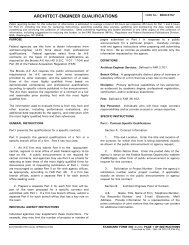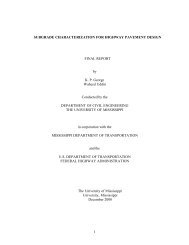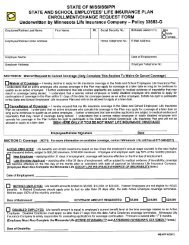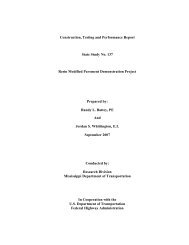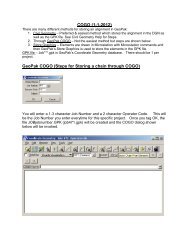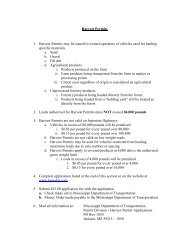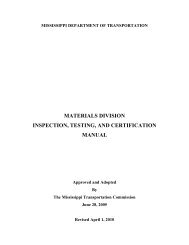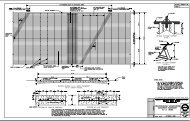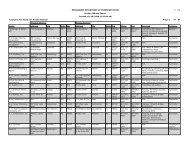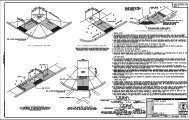State Study 111 - Polymer Modified Hot Mix Asphalt Field Trial.pdf
State Study 111 - Polymer Modified Hot Mix Asphalt Field Trial.pdf
State Study 111 - Polymer Modified Hot Mix Asphalt Field Trial.pdf
- No tags were found...
You also want an ePaper? Increase the reach of your titles
YUMPU automatically turns print PDFs into web optimized ePapers that Google loves.
CHAPTER 3: DESIGN AND CONSTRUCTION<br />
This chapter covers the modified mixture designs by the MDOT Materials Division and<br />
details the asphalt plant and the paving of the roadway.<br />
MIXTURE DESIGNS<br />
The mix designs for the nine modified mixtures were the same for each with only the<br />
addition of the different modifier. Material types for the modified mixtures are given in table<br />
1 for both the binder (high type binder course) HTBC and surface (high type surface<br />
course) HTSC. This table also lists the percentages of each type material. Both designs<br />
included reclaimed asphalt pavement (RAP) and the addition of 1 percent hydrated lime to<br />
reduce stripping. The gradation of the modified mixes are given in table 2 for both the<br />
binder and surface courses. The specified design range for the aggregate blend is also<br />
listed in table 2. Properties for the mixes are given in table 3. It is interesting to note that<br />
the job mix temperature for the modified mixes was 329 o F which is 31 o hotter than that for<br />
regular mix. For the modified mixes, the base petroleum asphalt cement was Grade AC 20<br />
and the binder course had 4.8 percent and the surface course had 5.2 percent asphalt<br />
binder by weight of the total mix. The RAP used in both the binder and the surface mixes<br />
had an AC content of 5.13%. The RAP contributed 21% of the total AC used in the binder<br />
mix and 10% of the total AC used in the surface mix.<br />
The mix design for the control section, both binder and surface courses, was the same as<br />
the modified mixes except that petroleum asphalt cement Grade AC 30 was used instead<br />
of the AC 20. The information contained in tables 1 through 3 also apply to the control<br />
section.<br />
The polymer loading was a percentage of the base asphalt cement in the mix. This<br />
loading is given below:<br />
Tradename <strong>Polymer</strong> Loading (%)<br />
CRYOPOLYMER 10.0<br />
KRATON 4.25<br />
MULTIGRADE<br />
Indeterminable<br />
NOVOPHALT 5.5<br />
ROUSE RUBBER 10.0<br />
SEAL-O-FLEX 4.25<br />
STYRELF 4.3<br />
ULTRAPAVE 3.0<br />
VESTOPLAST 7.0<br />
ASPHALT PLANT<br />
The asphalt was produced in Lehman-Roberts plant near Grenada, MS. This plant was a<br />
batch plant with a single hot bin (figure 1). The hot mix asphalt was conveyed to the top of<br />
8




